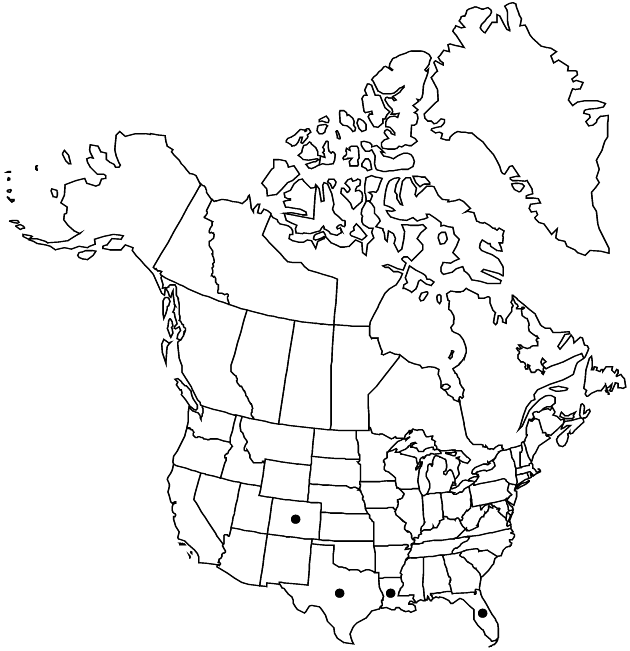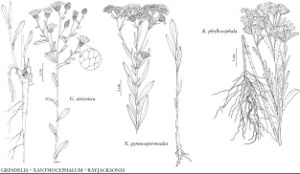Difference between revisions of "Rayjacksonia phyllocephala"
Amer. J. Bot. 83: 369. 1996.
Common names: Gulf Coast camphor-daisy
Basionym: Haplopappus phyllocephalus de Candolle in A. P. de Candolle and A. L. P. P. de Candolle, Prodr. 5: 347. 1836 (as Aplopappus)
Synonyms: Haplopappus phyllocephalus var. megacephalus (Nash) Waterfall Machaeranthera phyllocephala (Nash) Small Machaeranthera phyllocephala var. megacephala (Nash) Shinners Sideranthus megacephalus
FNA>Volume Importer |
FNA>Volume Importer |
||
| Line 47: | Line 47: | ||
|distribution=Colo.;Fla.;La.;Tex.;Mexico (Tamaulipas). | |distribution=Colo.;Fla.;La.;Tex.;Mexico (Tamaulipas). | ||
|tables= | |tables= | ||
| − | |references= | + | |references={{Treatment/Reference |
| + | |id=jackson1981a | ||
| + | |text=Jackson, R. C. and C. T. Dimas. 1981. Experimental evidence for systematic placement of the Haplopappus phyllocephalus complex (Compositae). Syst. Bot. 6: 8–14. | ||
| + | }} | ||
}}<!-- | }}<!-- | ||
| Line 64: | Line 67: | ||
|elevation=0–10 m | |elevation=0–10 m | ||
|distribution=Colo.;Fla.;La.;Tex.;Mexico (Tamaulipas). | |distribution=Colo.;Fla.;La.;Tex.;Mexico (Tamaulipas). | ||
| − | |reference= | + | |reference=jackson1981a |
|publication title=Amer. J. Bot. | |publication title=Amer. J. Bot. | ||
|publication year=1996 | |publication year=1996 | ||
|special status= | |special status= | ||
| − | |source xml=https://jpend@bitbucket.org/aafc-mbb/fna-data-curation.git/src/ | + | |source xml=https://jpend@bitbucket.org/aafc-mbb/fna-data-curation.git/src/f50eec43f223ca0e34566be0b046453a0960e173/coarse_grained_fna_xml/V19-20-21/V20_1004.xml |
|tribe=Asteraceae tribe Astereae | |tribe=Asteraceae tribe Astereae | ||
|genus=Rayjacksonia | |genus=Rayjacksonia | ||
Revision as of 20:22, 16 December 2019
Annuals or perennials, 10–70(–100) cm, herbaceous to suffrutescent. Leaf blades oblong to oblanceolate, mid-cauline (2.5–)4–13 mm wide. Heads essentially sessile, often surpassed by distal leaves that continue to very base of heads. Involucres (6–)10–15 × 12–30 mm. Phyllaries in 3–4 series, loose, subequal, apices erect to spreading, 1.3–1.7 mm wide, herbaceous. Ray florets 17–38; corollas 8.5–19 mm. Disc florets: corolla tubes longer than limbs. 2n = 12.
Phenology: Flowering (Jul–)Sep–Dec (sporadically Feb–Jun).
Habitat: Sandy sites, along waterways, canal banks, dunes, beaches, salt flats
Elevation: 0–10 m
Distribution

Colo., Fla., La., Tex., Mexico (Tamaulipas).
Discussion
Selected References
Lower Taxa
None.
